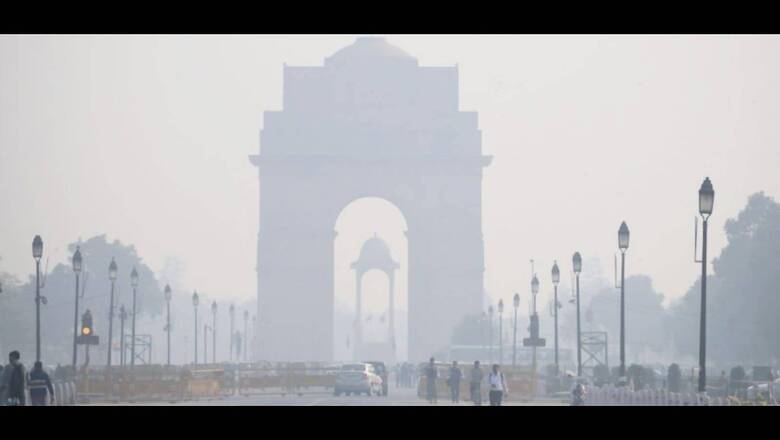
views
India's first official framework for air quality forecast, SAFAR, has been accepted internationally with peer-reviewed Elsevier Journal publishing its findings, founder project director Dr Gufran Beig said on Wednesday. The framework, mandated under the National Clean Air Programme (NCAP) and developed under the Ministry of Earth Sciences, is being used to make air quality forecasts in Delhi, Mumbai, Pune and Ahmedabad.
The findings of the framework incorporated in a research paper — India's maiden air quality forecasting framework for megacities of divergent environments: The SAFAR-project — were published online in peer-reviewed international Elsevier Journal Environmental Modelling and Software on Tuesday. The Indian Institute of Tropical Meteorology (IITM-Pune) led the research in association with the India Meteorological Department and Utkal University, Bhubaneshwar.
The research revealed that transport is the most dominating source of PM2.5 emissions. It accounts for 41 percent of PM2.5 pollution in Delhi, 40 percent in Pune, 35 percent in Ahmedabad and 31 percent in Mumbai. The share of biofuel emissions is highest in Mumbai (15.5 percent), followed by Pune (11.4 percent), Ahmedabad (10.2 percent) and Delhi (3 percent), it said.
We chose to demonstrate the SAFAR framework in four different and contrasting micro-climates of Indian cities – Delhi, Mumbai, Pune and Ahmedabad. The prototype can be scaled up to the remaining 128 non-attainment cities of India as per the commitment to NCAP, Beig said. NCAP seeks to achieve a 20 to 30 percent reduction in particulate matter (PM) concentrations by 2024, keeping 2017 as the base year.
India has 132 non-attainment cities that do not meet the prescribed air quality standards set by the Union Environment Ministry. The SAFAR framework is a one-stop solution for air quality management leading up to mitigation, and also helps formulate micro-specific air action plans based on robust science, Beig said.
Six components make up the SAFAR framework: Observational Network for Air Pollution and Weather Parameters, Quality Control and Quality Assurance, Inventory of Emissions: To keep track of pollution sources; SAFAR-Air Quality and Weather Forecasting Model, Data to Information Translation: The AQI Concept, and Technology and Outreach for Product Development and Dissemination. Now that India has its own air quality framework whose credibility is proven beyond doubt, we need to take its advantage to become self-sufficient in replicating in other cities as originally envisaged in the NCAP plan document rather than borrowing foreign framework with a cost, Beig said.
Using this, all urban local bodies can issue timely health advisories to alert citizens about 'bad air' days, which will help save vulnerable groups from severe health impacts of air pollution, the senior scientist added.
Read all the Latest News , Breaking News and Ukraine-Russia War Live Updates here.




















Comments
0 comment